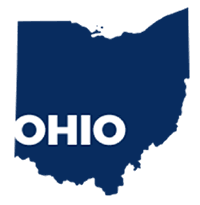Despite the improvement in the national economy compared to a few years ago, many Cleveland residents still find themselves struggling with unsurmountable levels of debt. Whether due to job loss, medical expenses, divorce or other life experiences, consumers in these situations need help. Filing for bankruptcy can be a good option in many cases.
When considering bankruptcy as a solution for high debt loads, it is important to first have a basic understanding of the two most common forms of consumer plans in order to select the one appropriate for a situation.
How does a Chapter 7 bankruptcy work?
A Chapter 7 bankruptcy is perhaps the most commonly filed form of bankruptcy among consumers. It is relatively simpler than a Chapter 13 and is well suited to consumers whose debts are largely unsecured. This means that they are not aligned to any particular collateral such as a mortgage is to a house. Examples of unsecured debts would be credit card balances or medical bills and is able to eliminate these debts. The United States Court indicates that a Chapter 7 bankruptcy can often be completed in as little as three months.
A Chapter 7 bankruptcy is also referred to as the liquidation bankruptcy because some assets are able to be sold as a means of paying back some debt. There are laws which prevent some assets from being sold and it is through this that many people who file Chapter 7 bankruptcies can keep cars, jewelry or other items.
Some debts like student loans or payments ordered for child support are not able to be included in a Chapter 7 plan per the American Bankruptcy Institute.
How does a Chapter 13 bankruptcy work?
A Chapter 13 bankruptcy can be thought of as another form of debt consolidation with additional legal protections. In this plan, debts are not generally excused but are rather consolidated. A trustee is appointed and debtors make payments to this trustee each month from which the trustee then pays creditors according to a designated plan that all creditors have agreed to.
The term of a Chapter 13 bankruptcy will run between three years and five years. Mortgage loans are not included in a Chapter 13, requiring debtors to continue to make payments to their mortgage companies each month in addition to their Chapter 13 payments. However, because a Chapter 13 bankruptcy does not sell assets in order to pay debt, homes can be retained under these plans, making it a good option for homeowners who wish to keep their homes.
Recommendations for consumers
People who believe they have no options left for dealing with their debt loads should contact an attorney with experience in bankruptcy plans. Working with a professional is always advised when seeking debt relief options.



